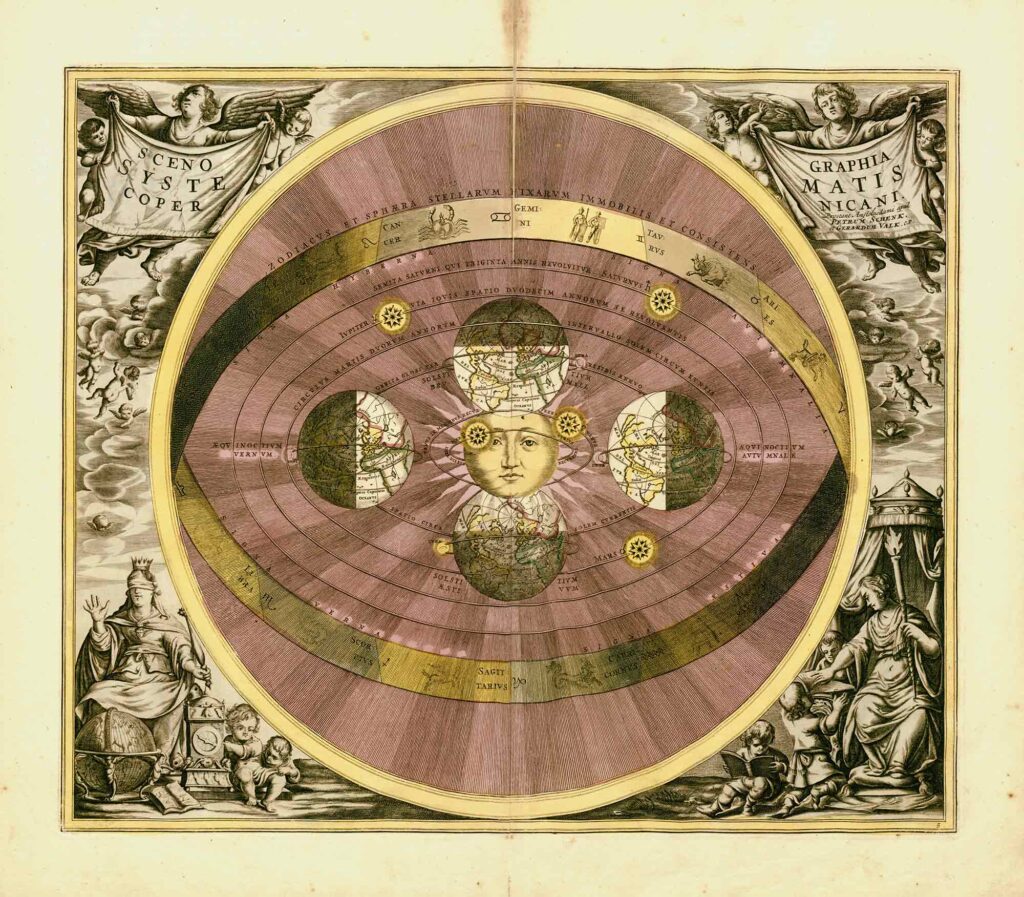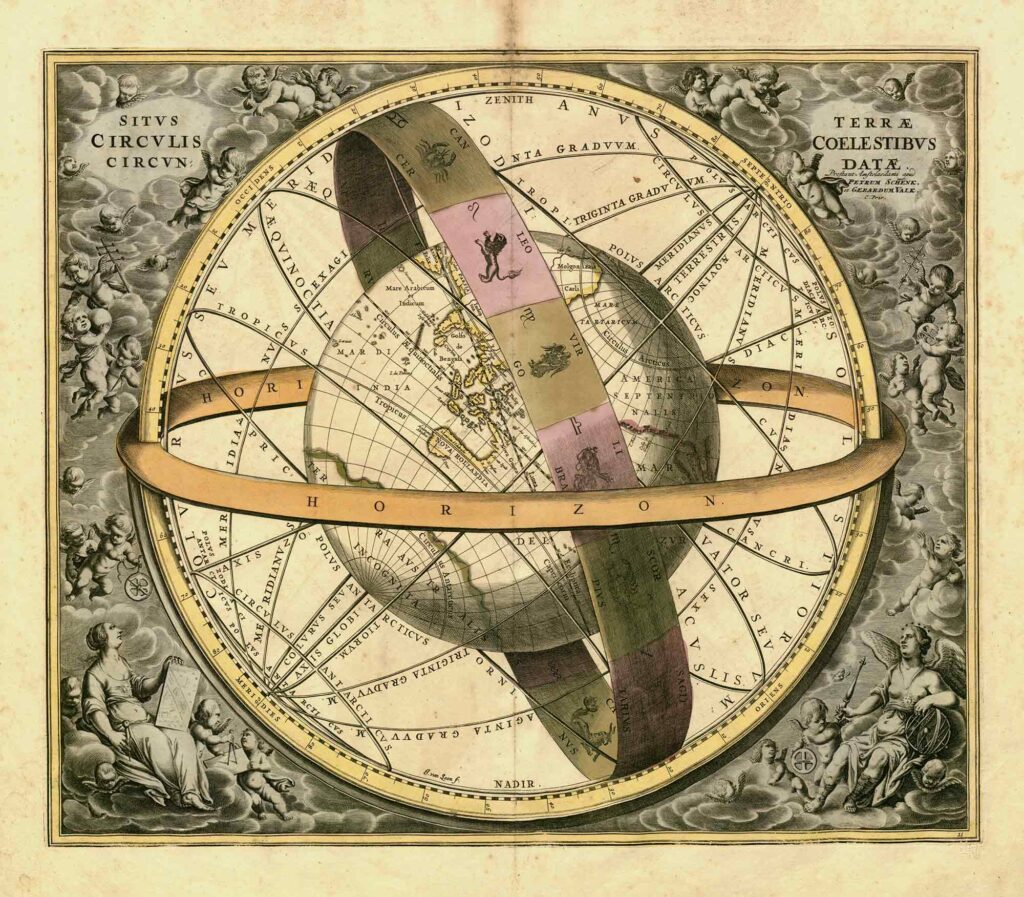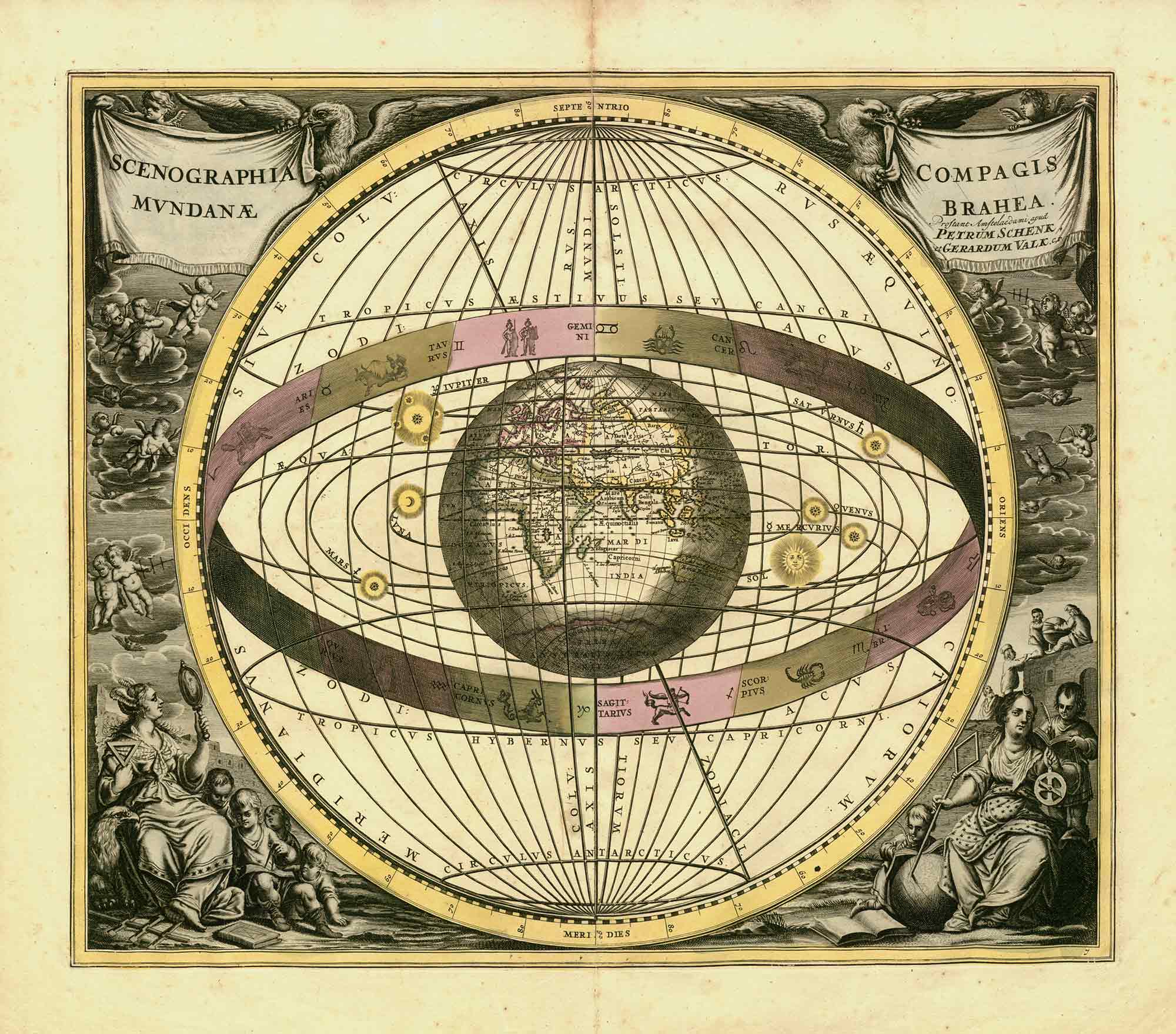Unlocking the Mysteries of The Harmonia Macrocosmica
Imagine a time when the mysteries of the cosmos were just beginning to unravel, where the grandeur of the universe was starting to take shape in human understanding. It was during this time, in the 17th century, that one remarkable work of art, science, and imagination came into existence – The Harmonia Macrocosmica. This was not merely a book; it was a star atlas that would forever change our perspective of the heavens above.
“The Harmonia Macrocosmica, a masterpiece that weds art and science, is a testament to the human desire to understand and depict the cosmos.”
Published in 1660 by Johannes Janssonius and crafted by the talented Andreas Cellarius, The Harmonia Macrocosmica is a stellar masterpiece that combined scientific knowledge of the time with breathtaking illustrations. It was more than just an atlas; it was a work of art that told a story of the universe and our place in it. This star atlas was a window to our understanding of the cosmos, a key that unlocked a door to a universe teeming with mysteries waiting to be solved.
In this article, we are going to dive deep into the fascinating world of The Harmonia Macrocosmica. We will explore the grand vision it presented, delve into the stunning illustrations it housed, and understand its historical significance. We will also get to know the men behind this masterpiece, Andreas Cellarius and Johannes Janssonius. So come, let’s embark on this cosmic journey together.
The Grand Vision: How The Harmonia Macrocosmica Changed Our Understanding of the Cosmos
Imagine a time when the mysteries of the cosmos were just beginning to unfold. A time when stargazers and philosophers alike were captivated by the celestial bodies that danced across the night sky. This was the world in which the Harmonia Macrocosmica was born, a star atlas that would forever change our understanding of the cosmos.

Published in 1660, this masterpiece by Andreas Cellarius was a grand vision of the universe as it was understood during the height of the Scientific Revolution. This was a period when the very fabric of our understanding about the universe was being rewritten, and the Harmonia Macrocosmica played a pivotal role in this transformation.
Harmonia Macrocosmica was not just an atlas; it was a testament to the astonishing advancements in astronomical observations and theories.
For the first time, the grandeur of the cosmos was captured in vivid, meticulous detail. Each chart within the atlas was an exquisite amalgamation of scientific accuracy and artistic splendor, offering a visual representation of the heavens that was both educational and awe-inspiring.
But what truly set the Harmonia Macrocosmica apart was its revolutionary depiction of celestial bodies and systems. While it included the traditional geocentric model (Earth at the center), it also presented the then-controversial heliocentric model (Sun at the center) proposed by Copernicus. This bold inclusion played a significant role in popularizing and legitimizing the heliocentric model, forever altering our perception of our place in the universe.
So, as you turn the pages of this remarkable star atlas, remember that you’re not just looking at charts and illustrations. You’re witnessing a monumental shift in human understanding, a moment in time when our perspective of the cosmos was forever changed. The Harmonia Macrocosmica was, and remains, a grand vision of the universe that transcends time and continues to inspire astronomers and dreamers alike.
The Art of Astronomy: The Stunning Illustrations in The Harmonia Macrocosmica
Imagine gazing upon an intricate work of art that not only dazzles your eyes, but also expands your mind. That’s precisely the experience you’d have when browsing through the pages of The Harmonia Macrocosmica.
Each plate within this extraordinary star atlas is a masterpiece in its own right, merging aesthetics with astronomy in a, illustrating the orbits of planets around the sun and the rotation of the Earth on its axis.
A Fusion of Science and Art
The illustrations are not just about stars and planets, they are also rich in allegorical and mythological symbolism, reflecting the era’s deep-rooted connection between the heavens and human culture. Mythological figures, zodiac signs, and allegorical depictions of the elements earth, air, fire, and water all feature prominently, providing a rich tapestry of context and meaning.
This beautiful fusion of science and art is what sets The Harmonia Macrocosmica apart. It doesn’t just tell us about the universe, it shows us the universe in a way that is engaging, immersive, and genuinely awe-inspiring.
The Lasting Impact of these Illustrations
Even more than three centuries after its publication, the illustrations in The Harmonia Macrocosmica continue to fascinate and inspire. They serve as a testament to the artistic skills and scientific knowledge of the time, and remind us of our enduring fascination with the cosmos.
So, the next time you look up at the night sky, spare a thought for the visionaries like Cellarius who brought that vast, inscrutable expanse down to Earth through the power of pen and ink.

A Glimpse Into the Past: The Historical Significance of The Harmonia Macrocosmica
Imagine you could travel back in time to the 17th century, when the world was just beginning to lay its hands on the secrets of the cosmos. A time when the Harmonia Macrocosmica was not just another book, but a monumental contribution to mankind’s understanding of the universe. The historical significance of the Harmonia Macrocosmica is deeply rooted in the scientific, artistic, and cultural milieu of the 17th century.
The Dawn of a Scientific Revolution
The Harmonia Macrocosmica was born out of a time of great scientific upheaval, often referred to as the Scientific Revolution. This atlas provided a visual representation of the universe as understood by the greatest minds of the time. It featured both the Ptolemaic geocentric system—with Earth at the center of the universe—and the Copernican heliocentric system—with Sun at the center. This was a daring act, as the heliocentric model was still controversial and not universally accepted.
Visualizing the Cosmos
By compiling observations and theories from a variety of sources and translating these into intricate engravings, the atlas acted as a visual bridge between the complex scientific theories of the time and the general public. It was a tool for education, allowing people of all backgrounds to begin to grasp the vastness and complexity of the cosmos.
Influence on Culture and Society
Furthermore, the Harmonia Macrocosmica held immense cultural significance. The stunning artistry of the celestial charts captured the imagination of the public and inspired a new appreciation for the beauty and mystery of the universe. This sat at the crossroads of science, art, and religion and was a testament to mankind’s relentless pursuit of knowledge and understanding.
Legacy of The Harmonia Macrocosmica
Even to this day, the Harmonia Macrocosmica continues to be a significant piece of our historical puzzle, shedding light on how our ancestors viewed the universe and their place in it. This star atlas is an incredible testament to the human spirit of exploration and discovery, and a lasting symbol of a time when the boundaries of our understanding of the cosmos were being expanded.
Andreas Cellarius: The Mastermind Behind The Harmonia Macrocosmica
Picture yourself in the mid-17th century. You are an astronomer, tirelessly charting the intricate ballet of the stars, the planets, and other celestial bodies. This immense task is made possible primarily by your imagination and intellect, as the most advanced observational tools are yet to be invented. It’s in this challenging backdrop that one man, Andreas Cellarius, took on the daunting task of creating a comprehensive star atlas. This man, the mastermind behind The Harmonia Macrocosmica, was not just an astronomer, but also a cartographer, setting the physical and conceptual groundwork for our understanding of the cosmos.
Andreas Cellarius was born circa 1596 in Neuhausen, a small town near Worms, Germany. He received his education at the University of Heidelberg and moved to Holland in the early 1620s, where he served as a school headmaster and later as a rector in the Dutch Reformed Church. However, it’s his passion for astronomy and cartography that would truly define his legacy.
“In a world where the mysteries of the universe were only just beginning to unravel, Cellarius dared to dream and visualize what few others could.”
His keen interest in the stars, coupled with his unparalleled cartographic skills, led to the creation of The Harmonia Macrocosmica, a celestial atlas unlike any other of its time. The work took several years to complete, and its publication in 1660 marked a pivotal moment in the history of astronomy.
The meticulous detail and artistic finesse in Cellarius’s work are a testament to his remarkable intellect and creativity. Each page of The Harmonia Macrocosmica depicts a universe teeming with wonder and complexity, inviting the reader to embark on a journey of cosmic exploration.
Cellarius’s pioneering work not only pushed the boundaries of scientific understanding in his time but also laid the groundwork for future astronomical advancements. His celestial atlas served as a blueprint for his contemporaries and inspired generations of astronomers to come.
As we delve deeper into the cosmos with our modern telescopes and satellites, we continue to build upon the foundation laid by this remarkable individual. So, remember the name, Andreas Cellarius, the mastermind behind The Harmonia Macrocosmica, the man who dared to map the stars.
Johannes Janssonius: The Publisher Who Brought The Stars to Life
Have you ever wondered about the man who made it possible for us to hold the cosmos in our hands? Meet Johannes Janssonius, the publisher who breathed life into the incredible vision of Andreas Cellarius and brought the stars down to earth with the publication of The Harmonia Macrocosmica.
Born in Arnhem, Netherlands, in 1588, Janssonius belonged to a family renowned for their commitment to cartography and publishing. He moved to Amsterdam, the then hub of global commerce and art, and set up his printing shop. His passion for cartography and his expertise in the craft of book production played a critical role in the creation of The Harmonia Macrocosmica.
Janssonius was not just a publisher, but an artist in his own right. He recognized the intrinsic beauty of Cellarius’s work and ensured the finished product was as much a work of art as it was a scientific text. He took the detailed manuscripts from Cellarius and transformed them into a breathtaking series of celestial maps that could be appreciated by astronomers and art enthusiasts alike.
“In the hands of Johannes Janssonius, the diagrams of the cosmos became captivating works of art.”
Janssonius’ careful hand and discerning eye were instrumental in deciding the final layout of the atlas. His choice of fonts, the addition of elaborate borders, and the meticulous attention to the printing process ensured that each page of The Harmonia Macrocosmica was a masterpiece in itself.
But his contributions weren’t merely aesthetic. He also played a pivotal role in the dissemination of the atlas. His wide network of connections facilitated the distribution of The Harmonia Macrocosmica across Europe, allowing the book to reach a broad audience. The Harmonia Macrocosmica’s influence in shaping our understanding of the cosmos would not have been possible without Janssonius’s dedication and his ability to recognize and amplify the groundbreaking work of Andreas Cellarius.
Even with the passing of years, the impact of Johannes Janssonius on the world of scientific publishing remains undeniable. His commitment to presenting scientific knowledge with artistic flair set a precedent for future publications. Today, as we flip through the pages of The Harmonia Macrocosmica, we are reminded of the publisher who dared to dream alongside Andreas Cellarius and brought the cosmos to the fingertips of mankind.
Conclusion
In conclusion, the Harmonia Macrocosmica is more than a mere star atlas. Crafted by the skilled hands of Andreas Cellarius and brought to light by the esteemed publisher Johannes Janssonius in 1660, it stands as a testament to human curiosity and our ceaseless quest for understanding the cosmos. It represents a significant milestone in the history of astronomical cartography and our understanding of the universe.
“The Harmonia Macrocosmica not only offers a glimpse into the celestial knowledge of the past, but also inspires us to continue exploring the mysteries of the cosmos.”
This profound work of art and knowledge, despite being centuries old, continues to captivate our imagination today. From the ethereal beauty of its illustrations to the fascinating theories it presents, the Harmonia Macrocosmica is a treasure trove of cosmic insights.







